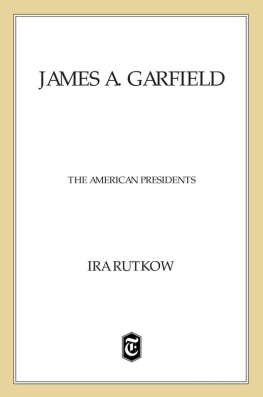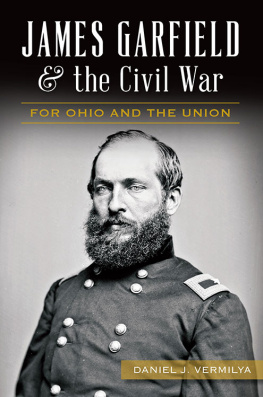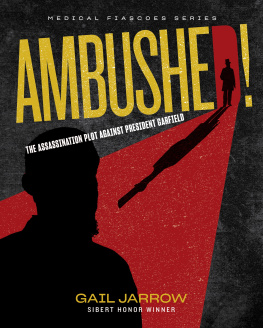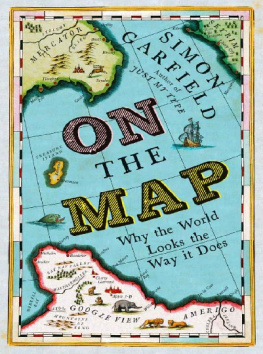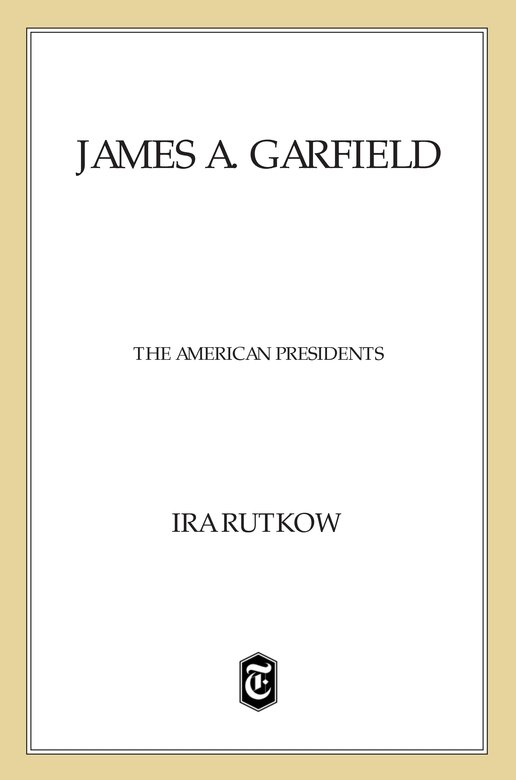Rutkow Ira - James A. Garfield: The American Presidents Series: The 20th President, 1881
Here you can read online Rutkow Ira - James A. Garfield: The American Presidents Series: The 20th President, 1881 full text of the book (entire story) in english for free. Download pdf and epub, get meaning, cover and reviews about this ebook. City: United States, year: 2006, publisher: Times Books;Henry Holt and Co, genre: Politics. Description of the work, (preface) as well as reviews are available. Best literature library LitArk.com created for fans of good reading and offers a wide selection of genres:
Romance novel
Science fiction
Adventure
Detective
Science
History
Home and family
Prose
Art
Politics
Computer
Non-fiction
Religion
Business
Children
Humor
Choose a favorite category and find really read worthwhile books. Enjoy immersion in the world of imagination, feel the emotions of the characters or learn something new for yourself, make an fascinating discovery.
- Book:James A. Garfield: The American Presidents Series: The 20th President, 1881
- Author:
- Publisher:Times Books;Henry Holt and Co
- Genre:
- Year:2006
- City:United States
- Rating:5 / 5
- Favourites:Add to favourites
- Your mark:
James A. Garfield: The American Presidents Series: The 20th President, 1881: summary, description and annotation
We offer to read an annotation, description, summary or preface (depends on what the author of the book "James A. Garfield: The American Presidents Series: The 20th President, 1881" wrote himself). If you haven't found the necessary information about the book — write in the comments, we will try to find it.
James A. Garfield was one of the Republican Partys leading lights in the years following the Civil War. Born in a log cabin, he rose to become a college president, Union Army general, and congressman--all by the age of thirty-two. Embodying the strive-and-succeed spirit that captured the imagination of Americans in his time, he was elected president in 1880. It is no surprise that one of his biographers was Horatio Alger.
Garfields term in office, however, was cut tragically short. Just four months into his presidency, a would-be assassin approached Garfield at the Washington, D.C., railroad station and fired a single shot into his back. Garfields bad luck was to have his fate placed in the care of arrogant physicians who did not accept the new theory of antisepsis. Probing the wound with unwashed and occasionally manure-laden hands, Garfields doctors introduced terrible infections and brought about his death two months later.
Ira Rutkow, a surgeon and historian, offers an insightful portrait of Garfield and an unsparing narrative of the medical crisis that defined and destroyed his presidency. For all his youthful ambition, the only mark Garfield would make on the office would be one of wasted promise.
Rutkow Ira: author's other books
Who wrote James A. Garfield: The American Presidents Series: The 20th President, 1881? Find out the surname, the name of the author of the book and a list of all author's works by series.

